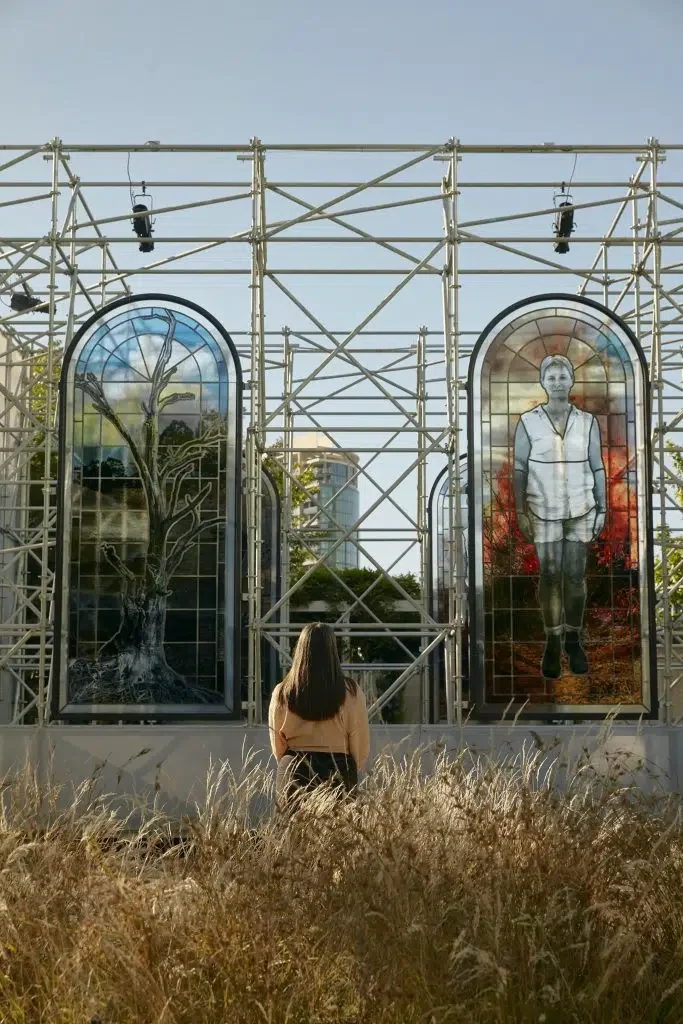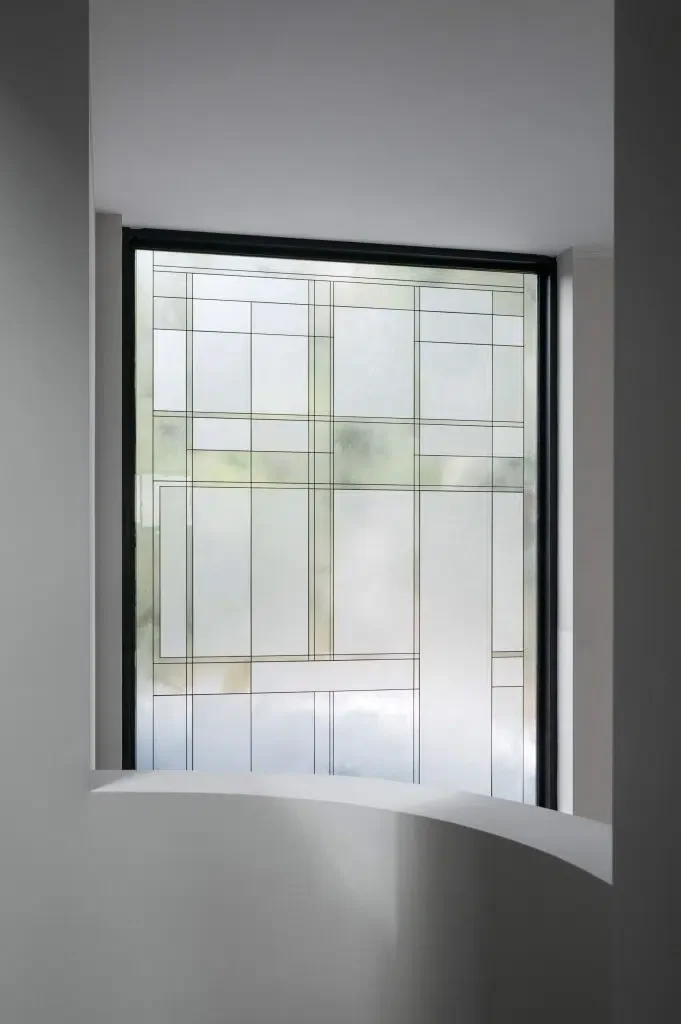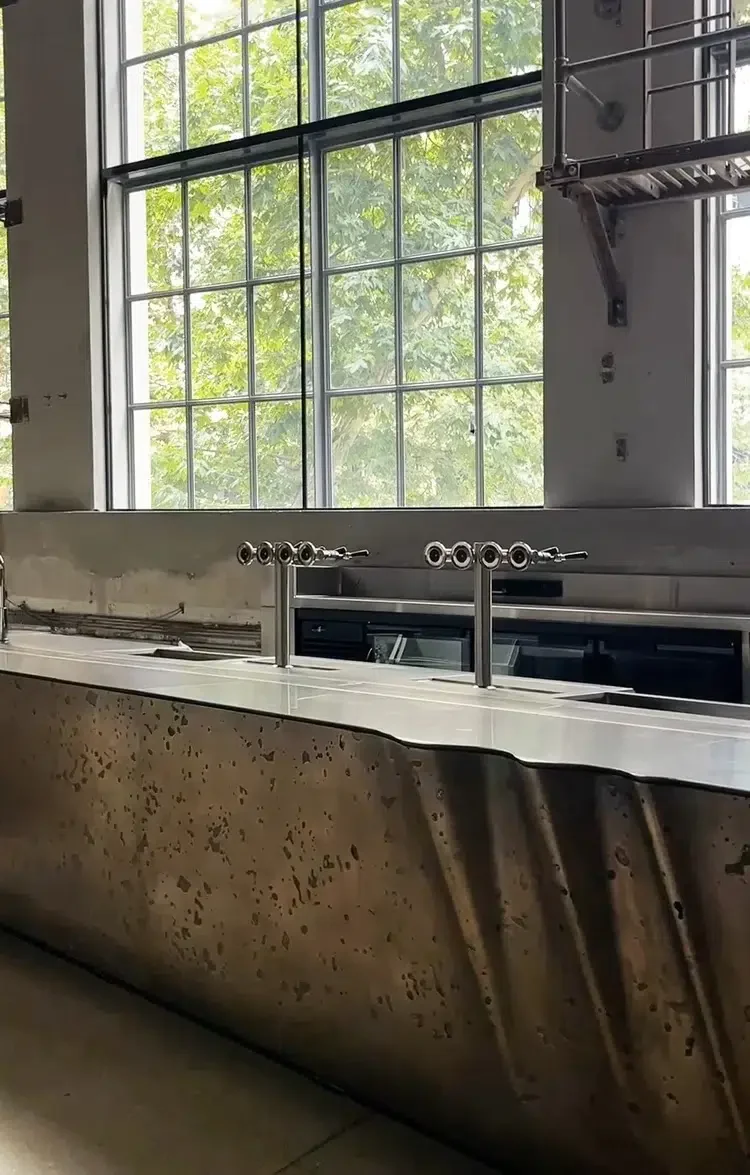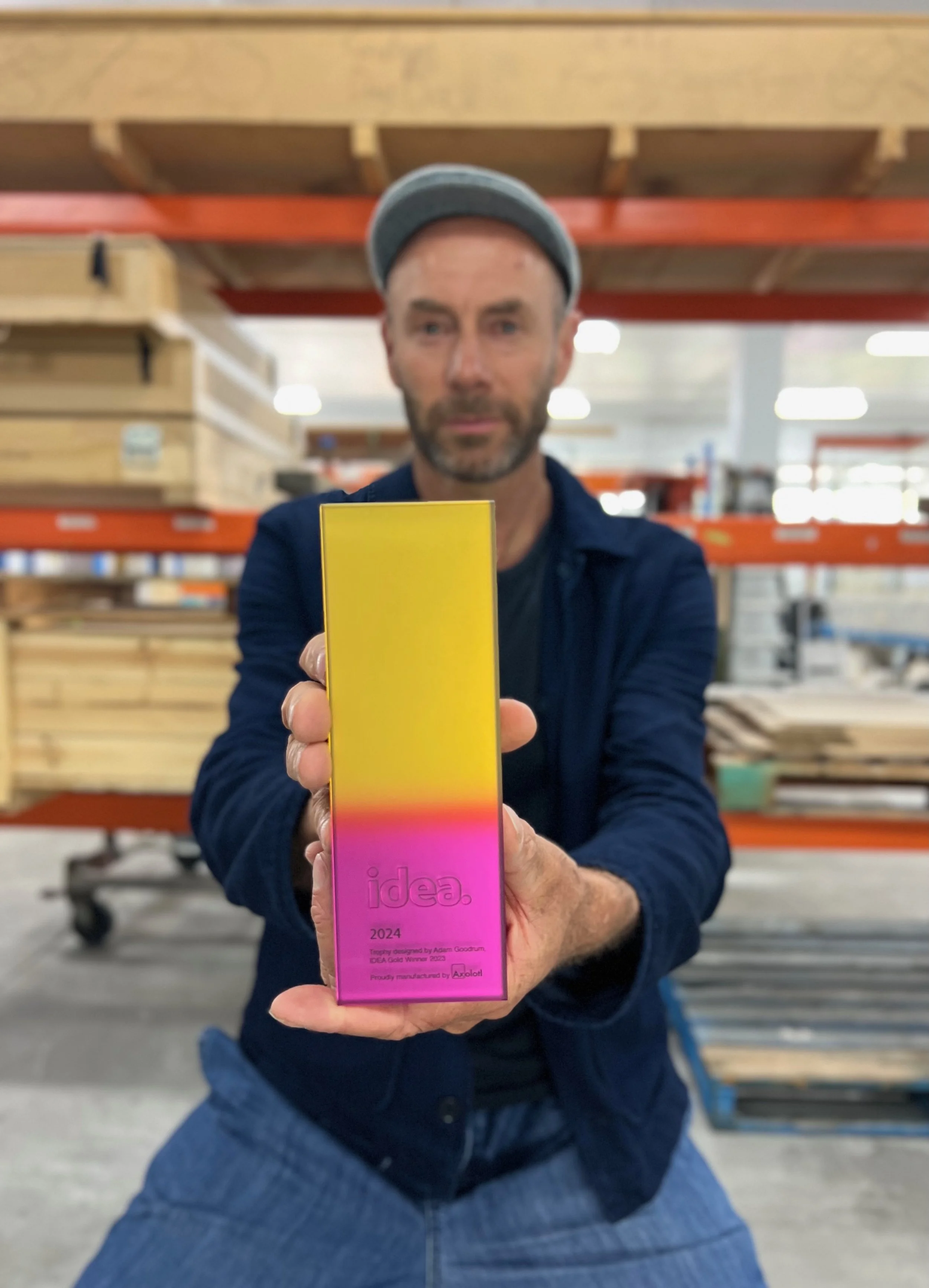Guided by an ethos of ‘the evolution of possible’, Axolotl is a premium surfaces provider that sees every space as an inviting blank canvas. The brand is also renowned for its artistic collaborations, including with the Interior Design Excellence Awards (IDEA) on its coveted trophies.
Launched in 1995 to deliver high-quality surfaces to artists, architects and designers, Axolotl pursues a passionate drive for collaboration and innovation. With more than 70 industry awards to its name – and clients such as Louis Vuitton, Four Seasons Hotels and Tiffany & Co. on its books – the brand delivers products that meet the demands of the very best in the industry.
Today, Axolotl has facilities around the world, the company is based in Sydney under the guidance of CEO Kris Torma and creative director Kim Torma. Bringing together a variety of sectors within the interior design and architecture industry, the brothers underline creativity and integrity as core values of the brand.
Glass Artwork by JR, National Gallery of Victoria: Created by renowned French artist JR for the NGV’s permanent collection, this large-scale glass artwork showcases Axolotl’s technical expertise in glass fabrication and finishing.
Celebrating their landmark 30th anniversary, the sibling visionaries share with Australian Design Review the lessons they’ve learned over their three-decade journey.
An inception rooted in practicality
Looking back at where it all started, Kris admits Axolotl’s inception was driven primarily by practical considerations. “We were looking at traditional architectural materials and noticing how limited they were in terms of flexibility and cost,” he recalls. “Bronze, copper and other metals were beautiful, but using them in large architectural applications was expensive, heavy and often impractical.”
Kim recalls the brothers working out of a one-car garage in Redfern, where they experimented with different surfaces and realised that architects and designers didn’t have easy access to the finishes they wanted.
Bronze Feature Wall and Integrated Balustrade with 3D Printing: Designed by Marcus Piper, this project merges craftsmanship and digital innovation through Axolotl’s bronze and 3D printing technologies.
“There was this gap between concept and what was physically achievable,” Kim remembers. “Our goal was to close that gap: to give designers and builders a way to bring their creative visions to life without being restricted by traditional material limitations.”
The breakthrough came when they discovered a method of bonding any real metal onto just about any substrate, a single moment of inspiration that “opened up a world of possibilities,” Kris says. “We didn’t set out to build a company as much as we set out to solve a problem – and that solution evolved into Axolotl.”
The launch of Axolotl closely coincided with the brothers’ discovery of IDEA, Australia’s longest-running independent interior design awards program, of which Axolotl has been a long-term partner. The two brands marked 15 years of close collaboration in 2025, another significant milestone to stand beside the company’s 30 years of operation.
Axolotl Grid Glass: A groundbreaking innovation that inlays metal into kiln-cast glass, allowing the layering of multiple Axolotl processes to create an entirely hybrid and unique product. The number of possible process combinations within each glass section is virtually unlimited.
“It quickly became clear that it wasn’t just another awards program,” Kris says. “It was celebrating Australian design in a meaningful way. We were drawn to that focus on innovation, creativity and excellence, which are values we’ve always held close.”
Partnering with IDEA, then, was a natural fit for the brand as it placed the premium surfaces manufacturer directly in touch with the architects and designers who would be best served by their innovative products.
The partnership has also resulted in a deeper appreciation for the impressive reserves of creative talent down under, as well as the brand’s own place within the broader design conversation.
“Over 15 years, we’ve watched design trends evolve through the trophy design, and seen how our materials have been used in increasingly imaginative ways,” Kim reflects. “The collaboration has reinforced that Axolotl isn’t just a supplier: we’re part of the creative process.”
Bronze Counter, Unsealed Living Finish: Designed by YSG for Built, this project showcases Axolotl’s bronze with an unsealed, living finish that evolves naturally over time.
Core beliefs in collaboration, innovation and design
Across a wide range of categories, IDEA highlights the very best in contemporary Australian design. One of its highest accolades is the Gold Medal, which has a unique story within the Axolotl and IDEA partnership.
The recipient of the Gold Medal has the honour of designing the following year’s trophy, which is then manufactured by Axolotl. It is a brand new initiative which ensures the trophy will constantly evolve across all areas of aesthetics, materiality and craftsmanship.
For Kris, it remains one of his favourite parts of the brand partnership. “It embodies everything Axolotl stands for: collaboration, innovation and design,” he says. “Each designer brings a completely fresh perspective, and we get the privilege of turning that vision into a physical object.”
The trophies were previously designed in-house, maintaining the same shape for several years and updating the finish to reflect current trends. After a few years, Axolotl were ready for a fresh approach.
Kris cites Adam Goodrum, designer of the 2024 IDEA trophy, as the embodiment of this new design philosophy. 2025 marks another characteristic evolution behind the initiative, with some radically different visual sensibilities. All this to say, the Gold Medal design challenge keeps everyone on their toes, as the trophy itself becomes a yearly design showcase.
This year marks their collaboration with Bates Smart, the Overall Winner of 2024, offering much promise for the new 2025 trophy design.
What keeps the initiative fresh, Kim suggests, are the consistently distinct parameters. “Every year, the brief changes,” he says. “The material changes, and the level of craftsmanship required pushes us to explore new possibilities. We love that the trophy isn’t static; it evolves with the industry and reflects the diversity of Australia’s design talent.”
Looking back at where they are today, and how far they’ve come in 30 years, the brothers express a mixture of pride and disbelief. There was never a three-decade plan, Kris admits, but just an idea and a lot of determination.
“I’m proud of the fact that we’ve built something enduring,” he says, “something that has genuinely shaped the design landscape. As pioneers in bespoke innovation, we’ve become the go-to collaborators for artists and designers seeking to create what’s never been seen before. That shared openness has been central to our enduring success.”
Sydney Opera House Tactile Model: Produced for the Sydney Opera House’s 50th anniversary in 2023, this tactile model assists the blind and visually impaired in experiencing the building’s form through touch.
Kim echoes similar sentiments, calling the milestone “humbling”. “Reaching 30 years makes you reflect on the journey,” he ponders. “The risks we took, the people who joined us along the way and the trust designers placed in us to bring their ideas to life.”
Even after all this time – and in the course of enormous shifts within the industry – what has kept Axolotl relevant and vital is its capacity to meet timeless demands for craftsmanship and creativity. The world of interior design and architecture may have changed since 1995, but the need for material excellence and artistic innovation hasn’t.
Terracotta Garage Door: A pioneering project believed to be a world first, integrating Axolotl’s terracotta treatment into a fully operable garage door.
Lead image: Terracotta Artwork at Hornsby Ku-ring-gai Hospital. A five-storey façade screen installation designed by Jade Oakley and Jessica Birk, crafted in Axolotl’s terracotta finish to bring warmth and tactility to the hospital’s architectural envelope.








